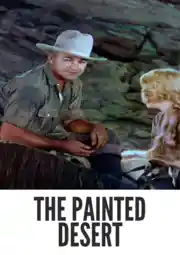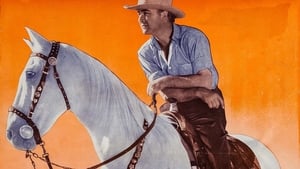Contact: [email protected]
Video Sources 0 Views

The Painted Desert Colorized 1931: Rediscovering the Beauty of Best Old Movies
Synopsis
[ez-toc]
Introduction
The allure of old movies lies in their timeless storytelling and the historical context they provide. “The Painted Desert Colorized 1931” is a unique gem that beckons us to revisit the past through a colorful lens. In the world of film restoration, the colorization of old movies sparks both fascination and controversy. This article explores the journey of “The Painted Desert Colorized” and delves into the age-old debate surrounding the colorization of classic films.
Read Media File Transfer Agreement: Terms and Conditions
Read FAQ
The Painted Desert Colorized (1931): An Iconic Western Film
As the reels of time turn, we find ourselves in the rugged landscapes of “The Painted Desert Colorized,” a 1931 Western film directed by Howard Higgin. This cinematic masterpiece stars William Boyd and Clark Gable, two stalwarts of the silver screen. Set against the backdrop of the Hopalong Cassidy series, the film weaves a narrative of friendship, betrayal, and the pursuit of justice in the harsh terrains of the Old West.
The plot unfolds with the Tungsten mine sabotage, leading to an unexpected alliance between the protagonists—Boyer (William Boyd) and Sandy (Clark Gable). The intricate storyline is a rollercoaster of emotions, filled with intense moments that have etched themselves into the annals of film history. Boyd’s portrayal of Hopalong Cassidy and Gable’s charismatic Sandy create a cinematic synergy that elevates “The Painted Desert” to an iconic status among old films.
One cannot help but be captivated by the vivid imagery and carefully crafted scenes that define the essence of this Western film. The Painted Desert Colorized is not just a geographical location; it becomes a character in itself, shaping the destinies of those who traverse its arid expanses. The film’s significance within the Hopalong Cassidy series cannot be overstated, as it played a pivotal role in establishing the cowboy hero archetype that resonates even today.
The Controversy of Colorization: Pros and Cons
The controversy surrounding the colorization of old movies is a saga as old as the films themselves. The advent of colorization aimed to breathe new life into classics, making them more accessible to contemporary audiences. Advocates argue that it revitalizes these cinematic treasures, bringing a fresh perspective to timeless narratives.
However, detractors vehemently oppose the alteration of the original black-and-white format, asserting that it compromises the artistic integrity of the films. Old films carry a unique aesthetic that encapsulates the era in which they were created, and colorization risks diluting this authenticity.
The Colorful Treatment: “The Painted Desert Colorized” as a Case Study
Enter the world of colorization, where “The Painted Desert Colorized” becomes a canvas for experimentation. The colorized version of the film raises intriguing questions about the balance between visual impact and authenticity. Does the infusion of color enhance or detract from the essence of the story?
In analyzing the colorized iteration of “The Painted Desert Colorized,” one must consider the technological limitations of the time. The methods used in the 1930s were rudimentary compared to today’s sophisticated digital processes. The colorized version of the film offers a glimpse into the challenges faced by early filmmakers in their pursuit of innovation.
While the colorization of “The Painted Desert Colorized” does introduce a vibrant palette, one cannot ignore the potential loss of nuance and subtlety inherent in the black-and-white original. The decision to colorize becomes a delicate balance between modern aesthetic preferences and preserving the historical charm of the film.
The Debate Continues: Perspectives from Filmmakers and Critics
The debate on colorization extends beyond the boundaries of “The Painted Desert Colorized,” drawing insights from prominent filmmakers and critics. Visionaries like George Lucas and Martin Scorsese have expressed varied opinions on the matter. Lucas, known for pushing the boundaries of filmmaking, sees colorization as a means of connecting with contemporary audiences.
Conversely, Scorsese, a staunch advocate for preserving the authenticity of cinema, emphasizes the importance of safeguarding the original artistic intent. These conflicting viewpoints underscore the complexity of the colorization debate and its impact on the legacy of old films.
Film scholars contribute a nuanced perspective, exploring how colorization influences audience reception and historical interpretation. The emotional resonance of a scene can shift with the introduction of color, challenging viewers to reinterpret the narrative in unexpected ways.
Preserving Our Cinematic Heritage: The Importance of Film Restoration
Amidst the fervent debate, the significance of preserving our cinematic heritage remains paramount. Film restoration projects and archives play a crucial role in safeguarding the legacy of old movies. These initiatives go beyond colorization, focusing on the meticulous restoration of deteriorating prints and the digitization of film archives.
Advancements in digital technology have revolutionized the restoration process, enabling a more accurate and non-intrusive approach. Digital preservation ensures that future generations can experience the magic of old films in their original form, appreciating the craftsmanship of filmmakers from a bygone era.
Conclusion
As we reflect on “The Painted Desert Colorized 1931,” the Tungsten mine sabotage becomes a metaphor for the ongoing debate over film colorization. Just as Boyd and Gable’s characters find themselves entangled in a web of circumstances, so too does the film industry navigate the complexities of preserving cinematic history.
In conclusion, it is essential for audiences to appreciate both the original black-and-white films and their colorized counterparts as distinct art forms. Each version offers a unique lens through which to view the past, and both deserve recognition for their contribution to the cinematic landscape. As we ride through the painted deserts of film history, let us support responsible restoration efforts that honor the legacy of old movies while embracing the vibrant hues that breathe new life into our cherished classics.














